MACBETH - An Outline-Guide to the Play
BARNES & NOBLE EDUCATIONAL
MACBETH - An Outline-Guide to the Play
Wilson McCutchan, Ph.D.
TABLE OF CONTENTS PAGE
PART ONE: INTRODUCTION
- The Tragedy of Macbeth……………………………………………… 1
- Suggestions on Reading Shakespeare (reprinted from Outlines of Shakespeare’s Plays by Homer A. Watt, Karl J. Holzknecht, and Raymond Ross)… 3
PART TWO: ANALYSIS OF THE PLAY
- Scene-by-Scene Synopsis of Macbeth………………………….. 11
- Sources …………………………………………………………………. 19
- Theme, Setting, Action……………………………………………… 25
- Guide to the Language of Macbeth, Scene by Scene……….. 34
- Characters: Analysis of Their Qualities and Development. 53
Banquo, 64. Duncan, 67. Macbeth, 53. Lady Macbeth, 59. Macduff, 65. Malcolm, 68. Ross, 67. Witches, 68.
- Critical Commentaries……………………………………………….. 69
- L. Bet hell, 78. A. c. Bradley, 72. L. B. Campbell, 64. E. K. Chambers, 73. S. T. Coleridge, 71. H. Craig, 82. W. C. 75. Ẽ. É. Stoll, 75. J. D. Wilson, 81.
- Staging and Production……………………………………………… 90
- Suggestions and Questions for Study, Review, and Essay Topics 95
PART THREE: HISTORICAL BACKGROUND
- Beginning and Development of English Drama……………………. 100
- England and London, 1558-1612………………………………………. 104
- Elizabethan Drama and Stage before and during Shakespear’s Lifetime 108
- William Shakespeare……………………………………………………….. 120
- Chronology of Shakespear’s Plays…………………………………….. 123
PART ONE: INTRODUCTION
- The Tragedy of Macbeth
For more than three hundred fifty years, Macbeth has been one of the most steadily popular of Shakespeare’s tragedies. On the stage it has proved itself an enduring hit. In addition to people who have seen live performances of the play, millions throughout the world have seen motion picture and television versions; many more have read it in English and in other languages.
As a story Macbeth moves directly and swiftly from beginning to end. Its compact intensity is one reason why it appeals to spectator and reader alike. Almost every scene has mysterious, suspensive, or vigorous action. Gripping as the plot of Macbeth is (and a detailed summary requires but a few pages), it also provides the basis for a clear understanding and appreciation of the play as tragedy.
Like most writers of his time, Shakespeare subscribed to the theory that poetry should “delight and instruct,” and Macbeth is poetic drama. The diligent reader will, therefore, wish to see how Shakespeare adapted the story to the theater and what he provided as “instruction.” Because Shakespeare was wise enough to express his important ideas in unequalled language and by means of entertaining situations rather than through sermons or “teaching essays,” his audience and readers are not always certain about his purposes or in agreement on them. Close attention to plot, to the adaptation of source materials, to setting, to characterization, to the poetry, and to the construction of the play as a whole, helps in identifying and determining major and minor themes.
Innumerable scholars and critics have taken so much interest in Macbeth that they have written hundreds of books and articles about the play and its characters. To list the titles of these works would require many pages. That these experts frequently disagree m their interpretations and opinions is added proof of the play’s continuing popularity and universality. Whereas each reader will be most satisfied with his own thoughtful examination of Macbeth, the views of more experienced people, many of them successful authors in their own right, will prove suggestive and stimulating.
Many see Macbeth as a case history of a man and a woman who, as thoroughly representative human beings, meet a temptation that is too strong for them to overcome. Others view these two major characters as fundamentally diabolical and evil, living through a brief period of ill-gotten glory and then meeting their deserved and just fate. Some readers find in themselves so much sympathy for the insane queen and her disillusioned husband that they almost wish it were possible for Macbeth to defeat Macduff and enjoy a few years of peace with his wife. But even as the wish rises, these people know in their hearts that such a conclusion would offend both God and humanity.
There are also critics who see Macbeth as an epic struggle between good and evil; or as an illustration of a willful descent into hell in this life; or as an appeal for good government through the dramatizing of a horrible example of tyranny.
Another school of criticism has no wish to view the characters in Macbeth as “real men and women” but prefers to examine the play simply as a “dramatic poem.” Closely akin to this group are students of imagery who scan the play for metaphors, similes, mental images, pictorial patterns, and echoes of phrase and idea. Whether Shakespeare introduced these consciously, subconsciously, or unconsciously is less important (to these readers) than the effect they give the person who recognizes them. Here, it would seem, the reader has an advantage over the viewer of the play in that he can reread and examine the text more intensively than can anyone watching and hearing an actual performance.
Every reader must finally decide these and similar questions for himself. As he better understands Shakespeare’s language, as he can more accurately relate the incidents in Macbeth to the beliefs current in Shakespeare’s day and transfer these to twentieth-century terms of reference, as he becomes aware of what other readers have thought about the play, so does he have greater assurance of attaining a satisfying concept of the tragedy.
To this end the following pages are dedicated. No one intends that this material should replace painstaking study of the play and of the criticism surrounding it. This volume can do little more than indicate what Macbeth contains and part of what it says, at the same time suggesting avenues to a more exhaustive and rewarding acquaintance and knowledge.
 Facebook
Facebook
 Google
Google
 Google+
Google+
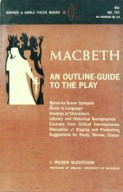

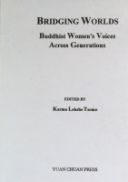


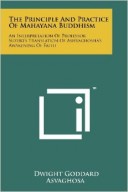
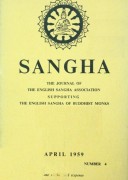
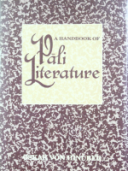
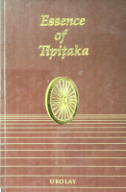
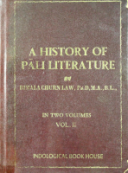


_thumb.jpg)





